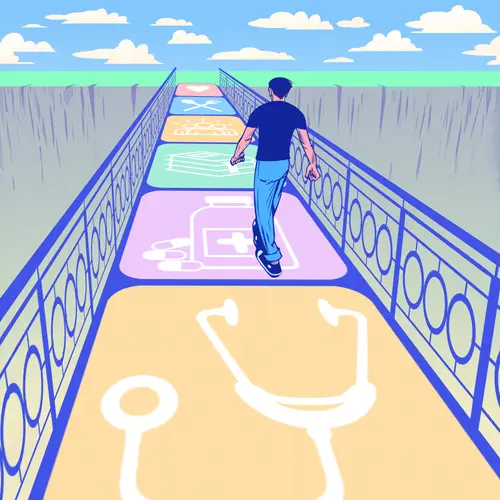A pseudoaneurysm happens as a result of injury to a blood vessel. The artery leaks blood, which then pools near the damaged spot. It's different from a true aneurysm, which happens when the wall of a blood vessel stretches and forms a bulge.
Most pseudoaneurysms are complications from medical procedures. You may need a doctor to repair the pseudoaneurysm. Some require surgery, but many can be managed with a simple procedure in the doctor's office.
What’s the Difference Between a Pseudoaneurysm and an Aneurysm?
The words aneurysm and pseudoaneurysm sound very similar, but they are two different conditions. An aneurysm is a weak spot in a blood vessel that has started to stretch and form a small bulge. If the wall of the blood vessel continues to weaken, the aneurysm could rupture. A rupture carries a risk of internal bleeding that can be life-threatening.
A pseudoaneurysm is due to an artery injury that pierces the wall of a blood vessel. The opening in the blood vessel allows blood to leak out and pool in the surrounding tissue. It may look like an aneurysm, but your blood vessel wall won't stretch into the bulge that characterizes a true aneurysm.
What Are the Causes of a Pseudoaneurysm?
A pseudoaneurysm is often a complication of cardiac catheterization. Cardiac catheterization is a procedure for diagnosing heart conditions. Your doctor will insert a flexible tube with a camera into the artery in your leg and thread it through your blood vessels to your heart. If the tube injures a blood vessel during the procedure, it can result in a pseudoaneurysm.
If you are having a cardiac catheterization procedure, talk to your doctor about your risk of getting a pseudoaneurysm. They will be able to tell you what to look for in the days after your procedure.
There are other causes for a pseudoaneurysm, including:
- Infection
- Pancreatitis
- Rupture of a true aneurysm
- Surgery
- Other trauma
What Are the Symptoms of a Pseudoaneurysm?
The symptoms of a pseudoaneurysm are usually pain and swelling at the site of the blood vessel damage. You might feel a lump under your skin where the blood is pooling in the tissue. It may feel tender or painful to the touch. It may feel like it's throbbing. Your doctor may notice a whooshing sound called bruit caused by the blood pulsing under your skin.
What Is the Treatment for a Pseudoaneurysm?
If you suspect you have a pseudoaneurysm, you should talk to your doctor, especially if you’ve recently had a cardiac catheterization. You will need to have an ultrasound of the area to get a firm diagnosis. Your doctor will be able to decide on treatment after seeing the details of the pseudoaneurysm.
If the injury to your blood vessel is small, your doctor may suggest waiting to see if it gets better on its own. Pseudoaneurysms that are under 2 centimeters wide may close up eventually. You may have to come in for additional ultrasounds to track the healing process.
If the injury is wider than 2 centimeters or hasn’t gone away on its own, your doctor will need to repair the damage to the blood vessel. There are several treatment options, including:
Stent. Your doctor can place a stent in the damaged artery to stop blood from leaking.
Compression. Ultrasound-guided compression is a procedure where your doctor uses an ultrasound to look at the pseudoaneurysm and uses external pressure to release the collected blood.
Medication. With an ultrasound-guided injection, your doctor uses an ultrasound to locate the pseudoaneurysm and inject a clot-building medication called thrombin to stop further bleeding.
Surgery. If the less invasive treatments don't work, your doctor may recommend surgery to repair the damaged area of the blood vessel.
Does a Pseudoaneurysm Have Health Risks?
If you think you might have a pseudoaneurysm, you should call your doctor. If you don't have the condition treated, you're at risk of severe complications. The buildup of blood can damage circulation in the area and cause tissue death.
You are also at risk for the bleeding to get worse and lead to hemorrhage. Your hemorrhage risk may be higher if you take certain prescription medicines, such as blood thinners.
Pseudoaneurysms also pose a risk of blood clots that can travel to your heart, lungs, or brain and cause serious health problems such as heart attack or stroke.

